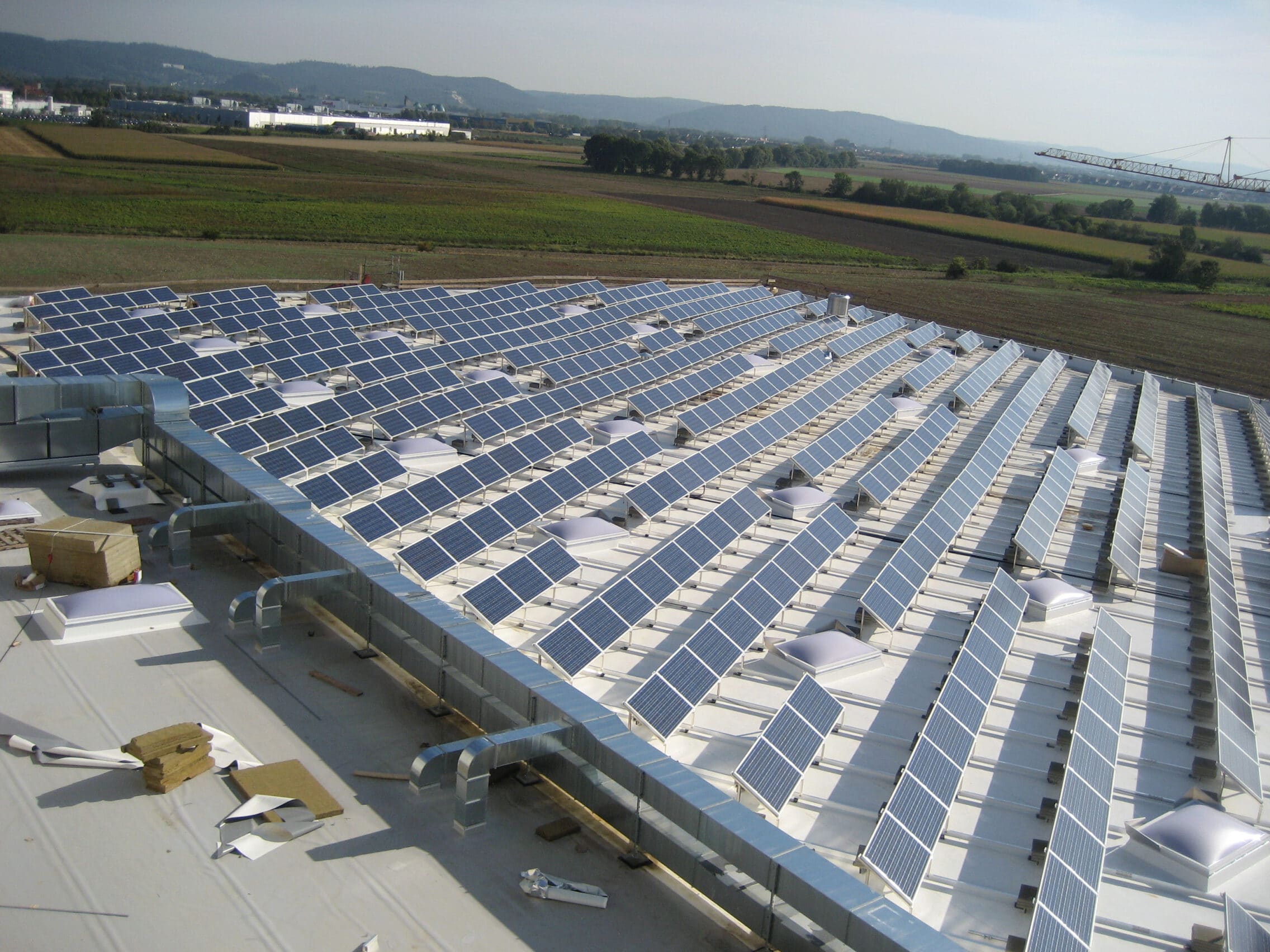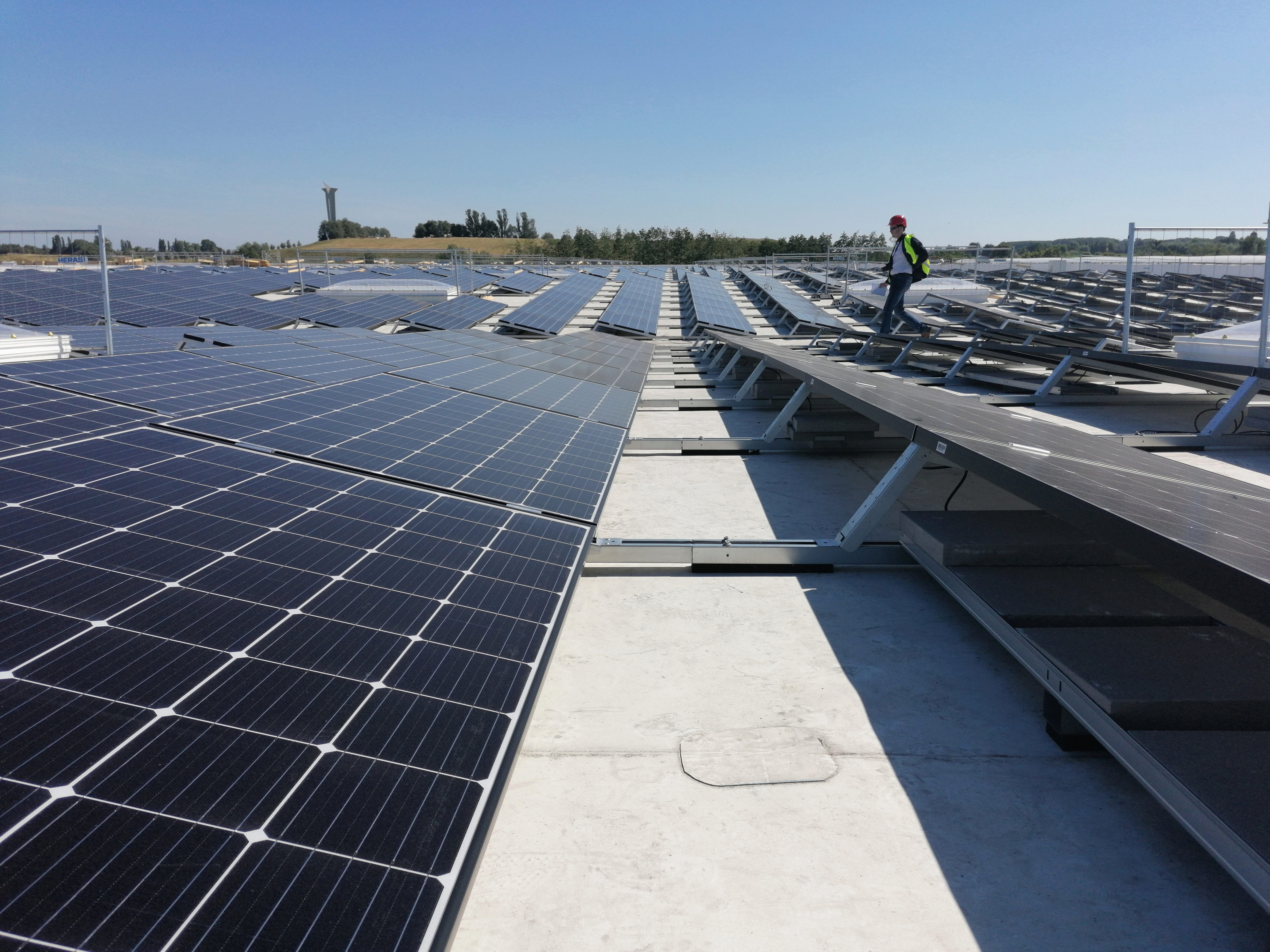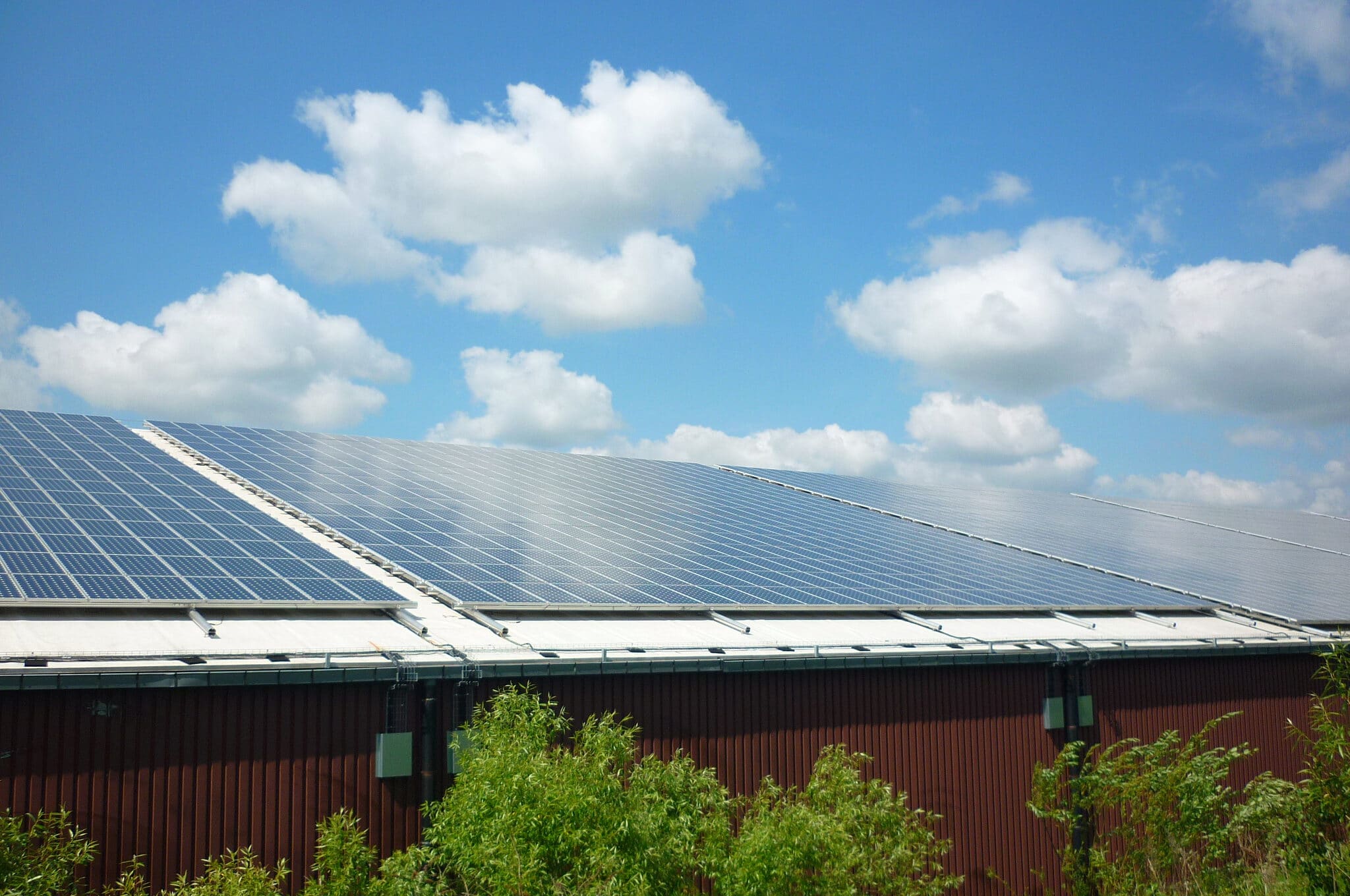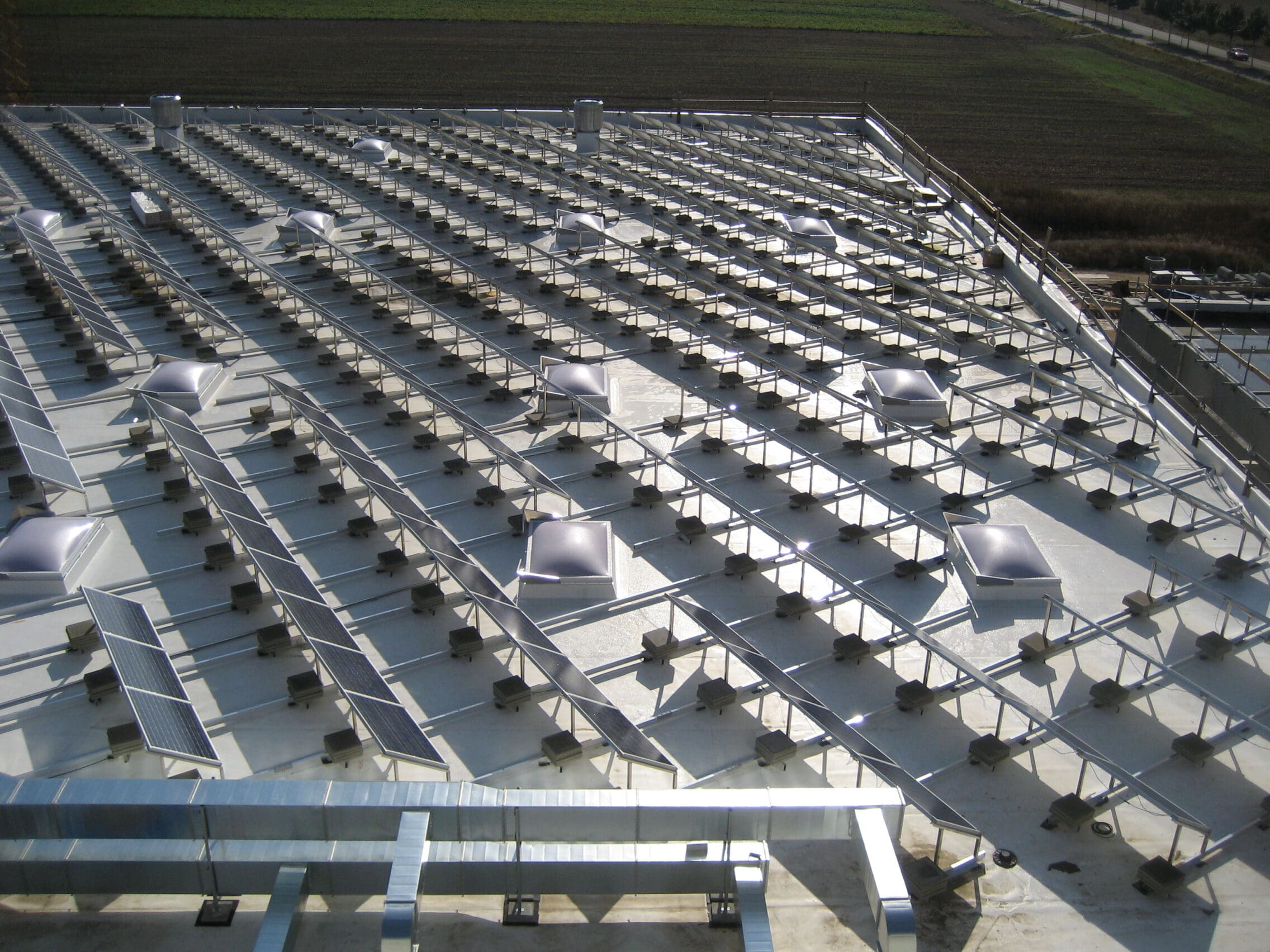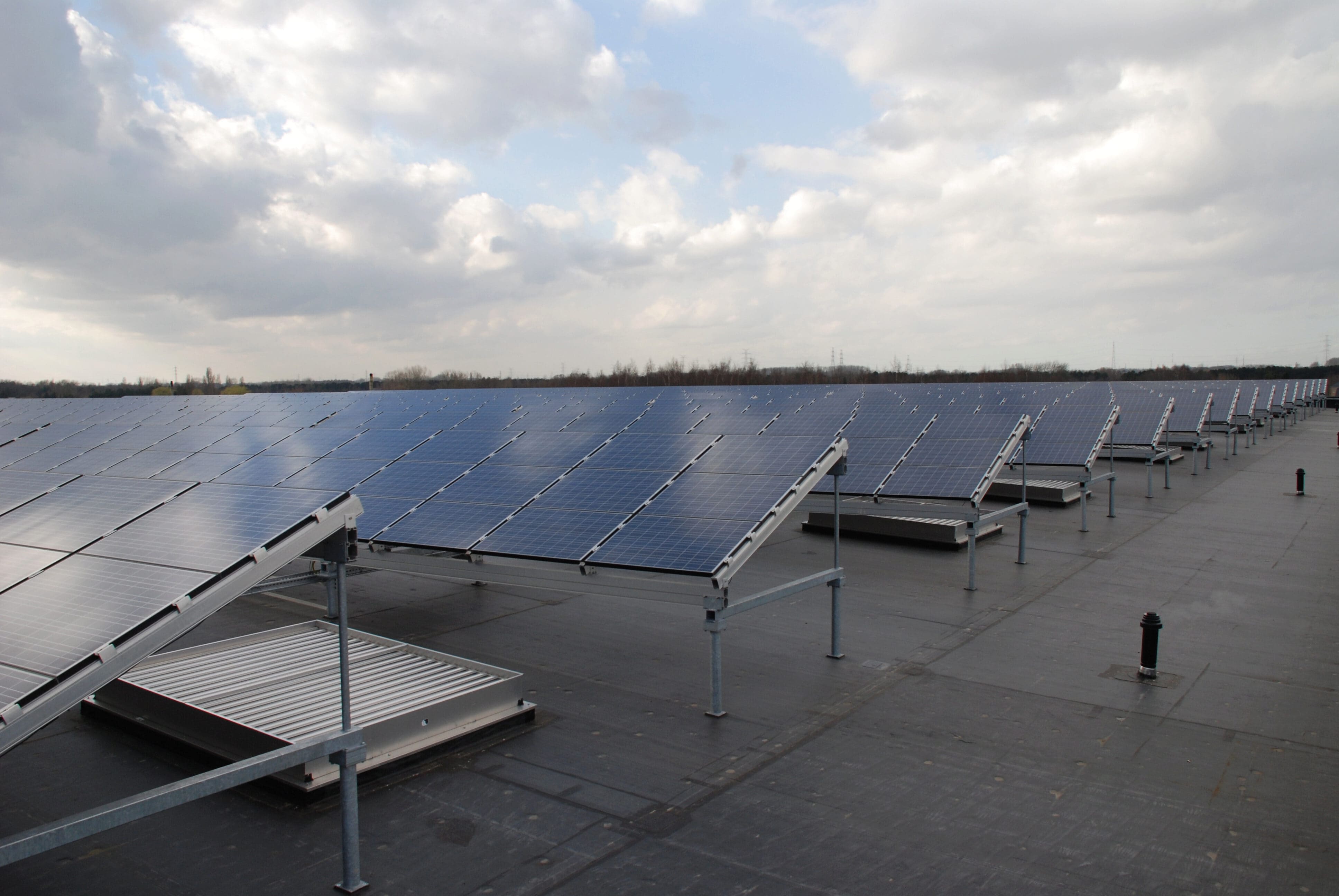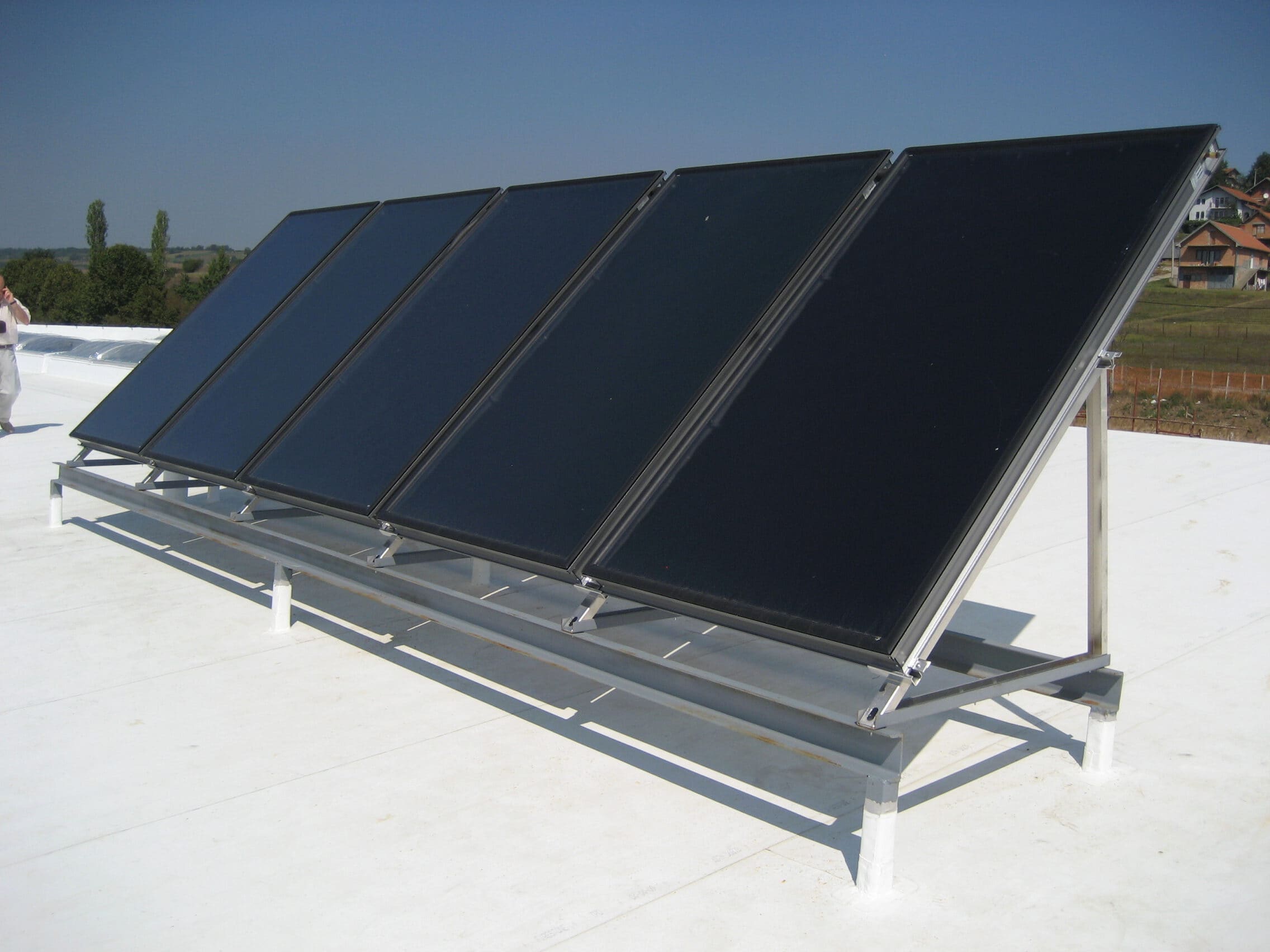6 Reasons why flat roofs are perfect for generating solar energy
Flat and low-slope roofs are particularly well-suited for solar installations. Their structural characteristics, adaptability and potential for efficient energy production make them a compelling choice for integrating renewable energy into building design.
1. Optimized use of roof space
Flat and low-slope roofs maximize the usable surface area for solar installations. Unlike pitched roofs, which may have irregular planes and limited usable space, flat roofs provide a continuous, unobstructed area for solar panels. This is particularly advantageous for large commercial or industrial buildings, where maximizing energy output is a priority.
2. Flexible orientation for maximum solar efficiency
Unlike pitched roofs, where the orientation and tilt of the solar system are dictated by the roof’s structure, flat roofs enable solar panels to be oriented in any direction. This allows optimizing panel placement for maximum solar exposure based on the building’s geographic location and sun path.
3. Simplified installation and maintenance
Flat roofs provide a safe and accessible platform for solar panel installation. This translates into lower installation costs, as roofers can move freely and securely without the constraints of steep pitches. The ease of installation not only reduces labor time but also minimizes disruption to building operations—a significant consideration for commercial properties.
Maintenance is similarly straightforward. Cleaning solar panels and conducting inspections are safer and more efficient on flat roofs, ensuring that systems remain in peak condition over their lifespan. For building owners, this ease of access means fewer maintenance disruptions and lower long-term costs.
4. Discreet and aesthetic integration
Flat roofs allow for solar roofing installations to be minimally visible from ground level. Solar panels can be installed using racks that keep them below the parapet line, preserving the building’s architectural integrity.
For architects designing in urban or historic contexts, this is a significant advantage. Building owners, on their side, benefit from the ability to adopt renewable energy without compromising the visual appeal of their property.
5. Compatibility with advanced solar technologies
Flat roofs are also ideal platforms for integrating cutting-edge technologies such as bifacial solar panels, which are able to capture the sun’s power from both sides. These types of solar roof solutions are considered to have better performance in environments with reflective surfaces, such as flat roofs waterproofed with light-colored membranes.
Emerging solar tracking systems, which adjust panel angles that follow the sun path, are also well-suited for flat roofs, where space and orientation can be optimized without obstruction.
6. Cost-effectiveness for long-term savings
The ease of installation, adaptability and high energy efficiency of solar roofing systems on flat and low-slope roofs contribute to significant cost savings. For building owners, the lower installation costs, reduced maintenance expenses and increased energy generation translate into a strong return on investment. Architects, on their side, can confidently propose solar roof designs as part of a cost-effective strategy for achieving sustainability goals, enhancing the value proposition of their projects.
Need specific advice on solar roofing?
